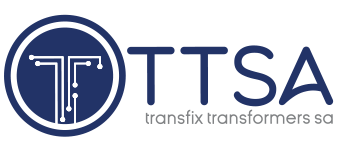South Africa intends launching a pilot programme for the procurement of 1 164 km of 400-kV powerlines, involving seven corridors in three provinces, in November as part of an initiative to mobilise private investment to address a grid backlog that is currently constraining new projects in high potential renewable-energy regions. The pilot independent transmission project (ITP) request for proposals will be overseen by the Independent Power Producer Office (IPPO), which has managed South Africa’s public renewables procurement since 2011, and will be preceeded by the release of a request for qualification in July.
Posts
Financial services provider Standard Bank has updated its group sustainable finance targets and aims to mobilise more than R450-billion by 2028 for energy and infrastructure development on the continent. This compares with its previous sustainable finance target of R250-billion by 2026 and builds on the R177-billion financed since 2022, with R50.6-billion in sustainable finance mobilised in 2023 and R74.3-billion in 2024.
Government officials from Botswana will meet with South Africa’s electricity ministry this week after power-import costs more than doubled, worsening a supply crisis. Breakdowns at Botswana’s main plant, the 600 MW Morupule B facility, have caused blackouts that last as many as four hours. South Africa’s state-owned power company fills the shortfall, but Eskom Holdings SOC Ltd. has raised tariffs significantly, Botswana’s energy minister, Bogolo Kenewendo, told lawmakers Monday.
Independent power producer Globeleq has appointed interim CEO Jonathan Hoffman as its permanent Group CEO following a thorough and extensive search process that evaluated internal and external candidates. Hoffman joined Globeleq in 2010. He was appointed chief development officer in 2020 and took over as interim CEO in July 2024.
Forestry, Fisheries and the Environment Minister Dr Dion George has granted Eskom air-pollution exemptions for eight power stations that would otherwise have been forced to close on April 1. He insists, however, that the exemptions do not represent a “blanket reprieve” and that they have been granted together with “rigorous conditions”. On December 10, Eskom applied for relief from the minimum emission standards (MES) for eight of its coal-fired power stations, including Duvha, Kendal, Lethabo, Majuba, Matimba, Matla, Medupi, and Tutuka.
South Africa’s paper and pulp industry is a vital economic sector, with the adoption of sustainable practices, such as improved energy efficiency, having bolstered its resilience despite challenges such as high transportation costs, water and energy intensity and limited suitable forestry land. Drive technology and automation specialist SEW-EURODRIVE says it has dedicated many years to modernising the industry through key initiatives that ensure cost effectiveness and alignment with global technology and trends. Bringing these advancements to Mpumalanga, which is the home of South Africa’s paper sector, the company has supplied purpose-built and precisely engineered industrial gears, geared motors, servo drives and a range of electronic products that were tailored to meet an operation’s specific needs.
Southern Africa, like much of the rest of the continent, has long struggled with inadequate electricity supply. Yet, amid the chronic shortages, some countries find themselves sitting on surpluses while their neighbours remain in the dark. This state of affairs led the 12 inland members of the Southern African Development Community (SADC) to flick the switch on a bold idea – the creation of a central electricity trading hub – in March 1995 to take advantage of the surpluses by sharing electricity across the region. Although it started as a regional cooperation and electricity resource sharing initiative, it later shifted to a more competitive set of wholesale electricity markets, including a short-term energy market, introduced in 2001, and a day-ahead market, which was added in 2009.
Cabinet has finally approved the South African Renewable Energy Masterplan (SAREM), which will seek to leverage green industrialisation opportunities from the country’s deployment of wind, solar and battery storage facilities. The SAREM was drafted well ahead of the 2024 elections and has now been adopted by the multiparty Government of National Unity, with Electricity and Energy Deputy Minister Samantha Graham-Maré having been delegated political responsibility for its implementation.
In this opinion article, Dr Wikus Kruger outlines the key reforms needed to address the current problems with South Africa’s once highly-respected programme for the public procurement of renewable-energy capacity from independent power producers.
Registered energy trader Enpower Trading has signed a ten-year power purchase agreement (PPA) with platinum mine developer Ivanplats for the yearly delivery of 48.30 GWh of renewable electricity to the Platreef mine, which is under construction on the northern limb of the Bushveld Complex in Limpopo. The wheeled electricity will be sourced from SolarAfrica Energy’s 342 MW SunCentral PV plant in De Aar, located in South Africa’s Northern Cape province.
INDUSTRY NEWS
- NERSA appoints Electricity Market Advisory Forum to guide power-market reformDecember 19, 2025 - 2:04 pm
- Eskom offers more details on envisaged roles of the NTCSA and the TSODecember 18, 2025 - 11:04 am
- NTCSA says any electricity deal to salvage Mozal must ensure its financial sustainabilityDecember 17, 2025 - 3:01 pm
WHERE TO FIND US
Address
9 Yellow Street
Botshabelo Industrial Area
Botshabelo, Free State
Call / Email Us
Tel: +27 (0) 61 956 6772
Email: info@transfix.co.za
